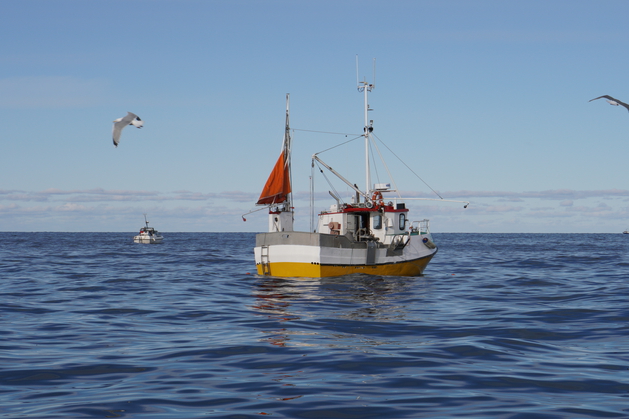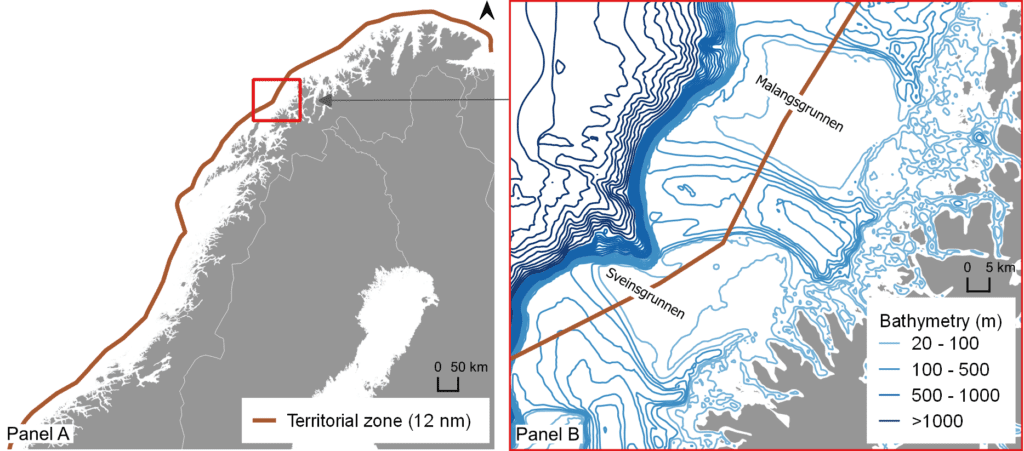Loss of MSC certification has little impact on the price of Norwegian cod

There is little or no price difference in the primary market for MSC-certified cod. This is shown in an analysis commissioned by the Norwegian Seafood Research Fund.
“The loss of MSC certification for cod caught within 12 nautical miles of the coast has not led to a lower price for this cod”, says Nofima Senior Scientist Geir Sogn-Grundvåg.
“After we have accounted for other factors such as fishing gear and area, the loss of MSC certification has had no effect”, adds Associate Professor Ingrid K. Pettersen from the Norwegian College of Fishery Science, UiT – The Arctic University of Norway.
Loss of MSC-certification
The cod fishery in the north consists of local coastal cod and skrei that have migrated from the Barents Sea to the Norwegian coast. While the Barents Sea cod was MSC certified in 2010, the coastal cod was certified in 2011 and was subject to an approved development plan. It has not been successful. Because the coastal cod mixes with the migrating skrei during the winter season, all cod caught within 12 nautical miles of the coast (north of the 62nd parallel) lost their MSC certification on 15 August 2021.
“This provided a unique opportunity to study whether the main idea behind MSC certification holds water. In other words, price premiums are given for certified products in the end markets, and these are shared with fishermen and lead to more sustainable management and fishing practices”, says Sogn-Grundvåg.
Commissioned by the Norwegian Seafood Research Fund, scientists have therefore studied the price-related consequences of the loss of MSC certification for cod caught within 12 nautical miles of the coast.
The Norwegian fisheries industry has invested significant amounts in MSC certification of the most important Norwegian fisheries. This is based on the assumption that such certification is crucial in terms of access to many of the most attractive seafood markets. However, the actual significance of these investments has not been investigated using scientific methods.

Other factors are more important
The scientists point out that in order to study the effect of the loss of MSC certification, it is important to take other factors into account that may affect price, and which may have changed after the loss of certification. The fishing gear, size, quality and where the fish is delivered are possible factors that may have affected the price for fishermen. Because they have a high level of data detail in this area, the scientists have categorised buyers into groups according to main application; Conventional (salted fish, clipfish, stockfish), filleted or fresh fish.
“We find that it is these other factors that matter most regarding price. For example, the fish that are labelled with ‘extra quality’ or A-quality achieve a somewhat higher price than fish that do not have this labelling”, says Ingrid K. Pettersen.
“It is also interesting that there is a significant difference in types of buyers. Those buyers engaged in fillet production have a somewhat higher willingness to pay for MSC-certified cod than those whose main activity is conventional production.”
“How, then, can you explain that there is no price premium for cod that has MSC certification?”
“One important explanation is probably that cod is a very versatile raw material that can be used in many different products; fresh and frozen, whole fish and fillets, for salted fish, clipfish and stockfish. The different products are sold to markets and customers that have different demands regarding sustainability labelling”, says Geir Sogn-Grundvåg.
Other explanations may be:
- Supermarket chains hold a lot of market power and can choose not to share a price premium with the next link higher up the value chain.
- Fierce competition for the purchase of fresh cod from fishermen. Buyers are afraid of losing deliveries and therefore may not dare to pay a lower price for cod that has reduced quality or lacks sustainability certification.
MSC more important in Northern Europe
Several consumer studies in Northern European markets show that there is a price premium for MSC-labelled seafood in some markets and segments.
- “However, in the large Southern European markets such as Spain, Portugal and Italy, where around 40 percent of cod from Norway is consumed, there seems to be low demand for MSC-certified fish”, says Ingrid K. Pettersen.
Geir Sogn-Grundvåg, who has led the analysis work, believes it is important to state that there is no doubt that sustainability is important.
- “We do not find, however, that this leads to any price difference in the primary market for cod with and without MSC certification, with the exception of buyers that have fillets as their main activity”, he says.
The analysis work has been conducted in collaboration with Associate Professor Julia Bronnmann at the University of Southern Denmark and Professor Frank Asche at the University of Florida.
The next phase of the project is to study whether Norwegian exporters achieve price premiums for certified cod and whether this varies for different products and markets.
Facts about MSC:
- The Marine Stewardship Council (MSC) offers an independent certification programme for wild-caught fish and manages the MSC ecolabel. This label guarantees that the fish come from sustainable fisheries.
- Today, MSC is almost exclusive as a global provider of sustainability labelling for seafood.
- In its latest annual report, MSC estimates that 15 percent of the world’s marine fisheries are MSC certified.
- Over the past three to four years, the proportion of MSC-certified fish from Norwegian fisheries has dropped from almost 90% to approximately 40%.
- In Norway, cod and haddock caught within the territorial boundary of 12 nautical miles have lost their MSC certification, while cod and haddock caught outside the 12-mile zone have retained the certification. In addition, Norwegian spring-spawning herring, mackerel, blue whiting and cod in the North Sea have lost MSC certification over the past four years.
- The Norwegian Seafood Research Fund project will analyse the consequences of the loss of MSC certification for cod and haddock within 12 nautical miles of the coast, and Norwegian spring-spawning herring.
